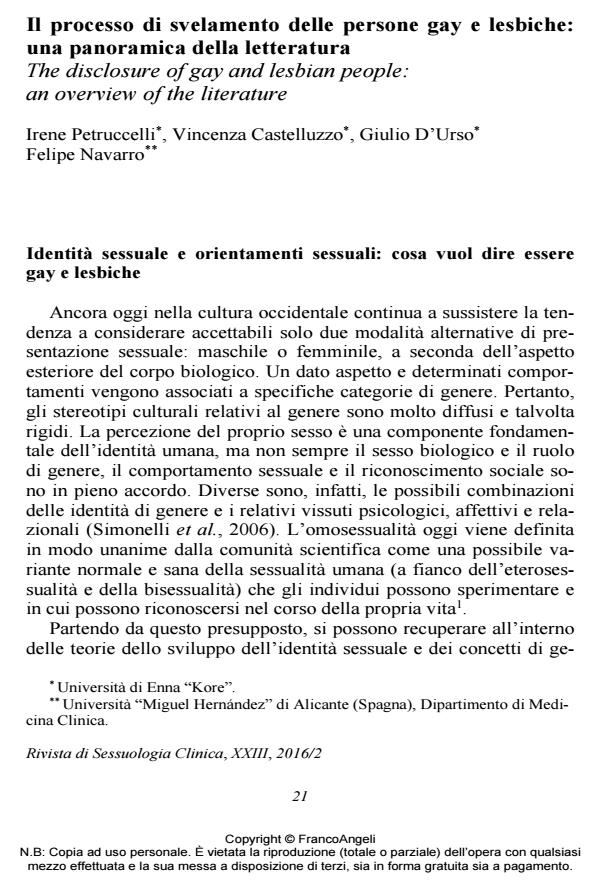The disclosure of gay and lesbian people: an overview of the literature
Journal title RIVISTA DI SESSUOLOGIA CLINICA
Author/s Irene Petruccelli, Vincenza Castelluzzo, Giulio D'Urso, Felipe Navarro
Publishing Year 2016 Issue 2016/2
Language Italian Pages 20 P. 21-40 File size 210 KB
DOI 10.3280/RSC2016-002002
DOI is like a bar code for intellectual property: to have more infomation
click here
Below, you can see the article first page
If you want to buy this article in PDF format, you can do it, following the instructions to buy download credits

FrancoAngeli is member of Publishers International Linking Association, Inc (PILA), a not-for-profit association which run the CrossRef service enabling links to and from online scholarly content.
The aim of this paper is to describe the main aspects of coming out, which is configured as a long and elaborate path, marked by numerous difficulties. In this regard, is important to underline the concepts of sexual identity and sexual orientation. Gay and lesbians people show how the non-linearity and non-correspondence - respectively between sex, gender, role of social gender and sexual - can be equally trajectories healthy development and promoters of well-being. Therefore, coming out is configured as a process in which the persons (gay or lesbian) becomes aware of his/her emotional and sexual preferences and he/she integrates these in his/her life; for which social identity and personal identity become consistent. Farther, we are going to describe as the reactions of parents may influence the psychological well-being of gay and lesbian children.
Keywords: Coming out, omosessualità, omofobia
Irene Petruccelli, Vincenza Castelluzzo, Giulio D'Urso, Felipe Navarro, Il processo di svelamento delle persone gay e lesbiche: una panoramica della letteratura in "RIVISTA DI SESSUOLOGIA CLINICA" 2/2016, pp 21-40, DOI: 10.3280/RSC2016-002002